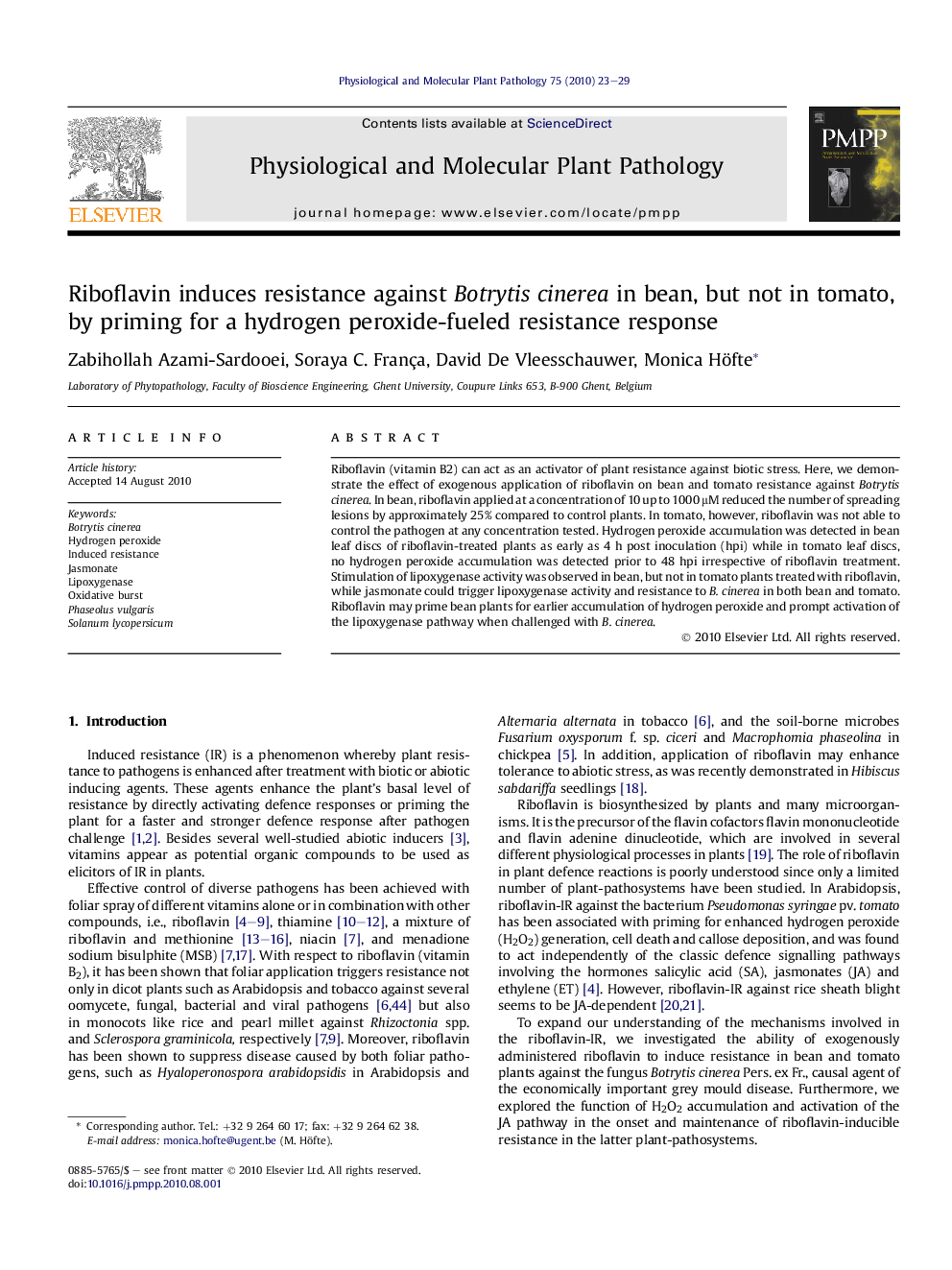| Article ID | Journal | Published Year | Pages | File Type |
|---|---|---|---|---|
| 2836617 | Physiological and Molecular Plant Pathology | 2010 | 7 Pages |
Riboflavin (vitamin B2) can act as an activator of plant resistance against biotic stress. Here, we demonstrate the effect of exogenous application of riboflavin on bean and tomato resistance against Botrytis cinerea. In bean, riboflavin applied at a concentration of 10 up to 1000 μM reduced the number of spreading lesions by approximately 25% compared to control plants. In tomato, however, riboflavin was not able to control the pathogen at any concentration tested. Hydrogen peroxide accumulation was detected in bean leaf discs of riboflavin-treated plants as early as 4 h post inoculation (hpi) while in tomato leaf discs, no hydrogen peroxide accumulation was detected prior to 48 hpi irrespective of riboflavin treatment. Stimulation of lipoxygenase activity was observed in bean, but not in tomato plants treated with riboflavin, while jasmonate could trigger lipoxygenase activity and resistance to B. cinerea in both bean and tomato. Riboflavin may prime bean plants for earlier accumulation of hydrogen peroxide and prompt activation of the lipoxygenase pathway when challenged with B. cinerea.
Research highlights► Riboflavin induces resistance to Botrytis cinerea in bean but not in tomato. ► Hydrogen peroxide accumulated in bean treated with riboflavin. ► Lipoxygenase activity was stimulated in bean treated with riboflavin. ► Defense reactions were not detected in tomato treated with riboflavin. ► Jasmonate triggered resistance to B. cinerea in both bean and tomato.
